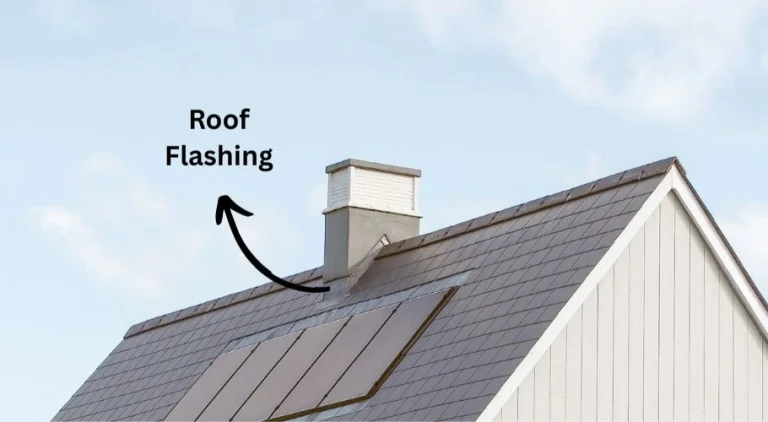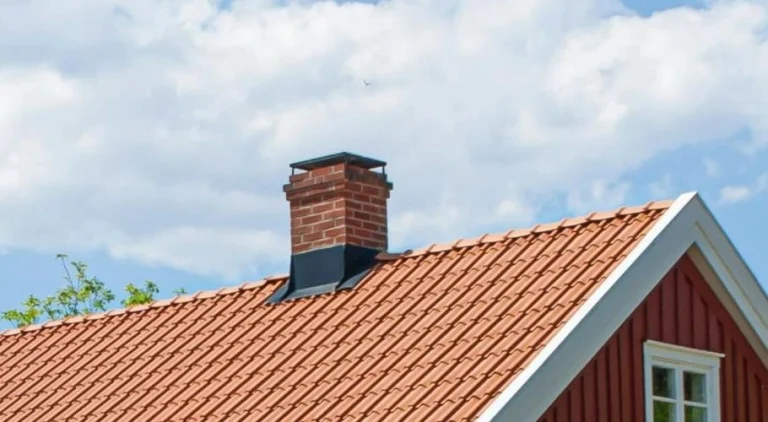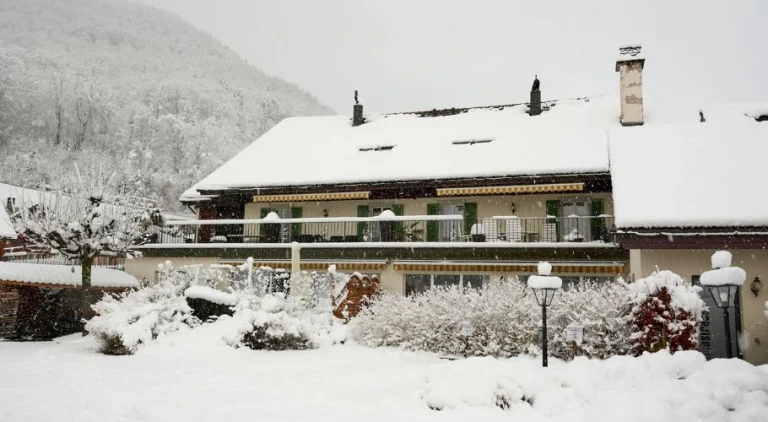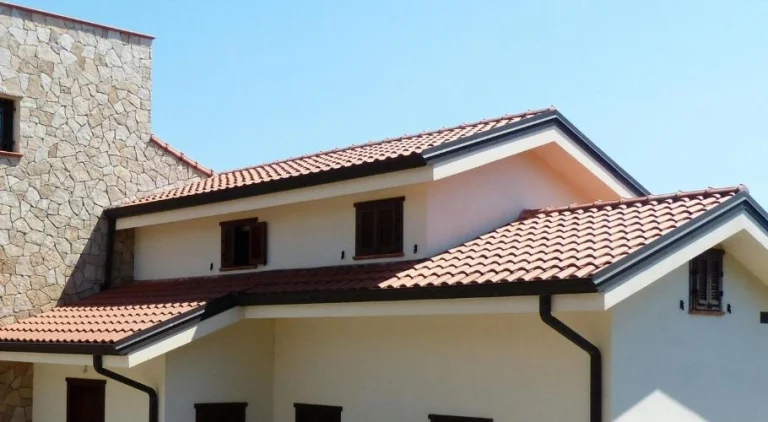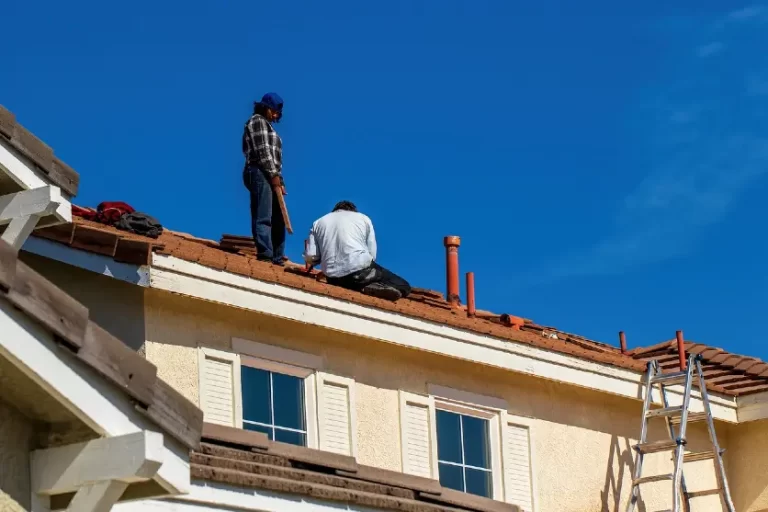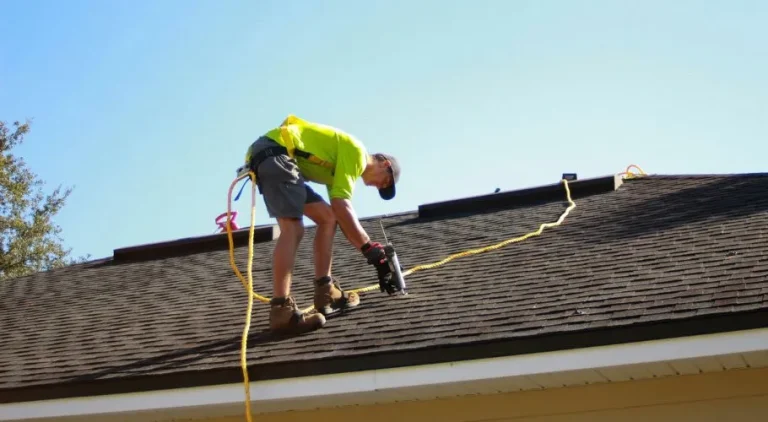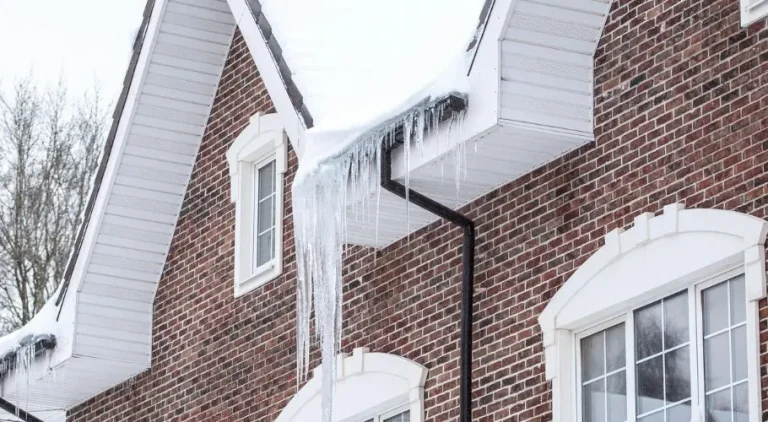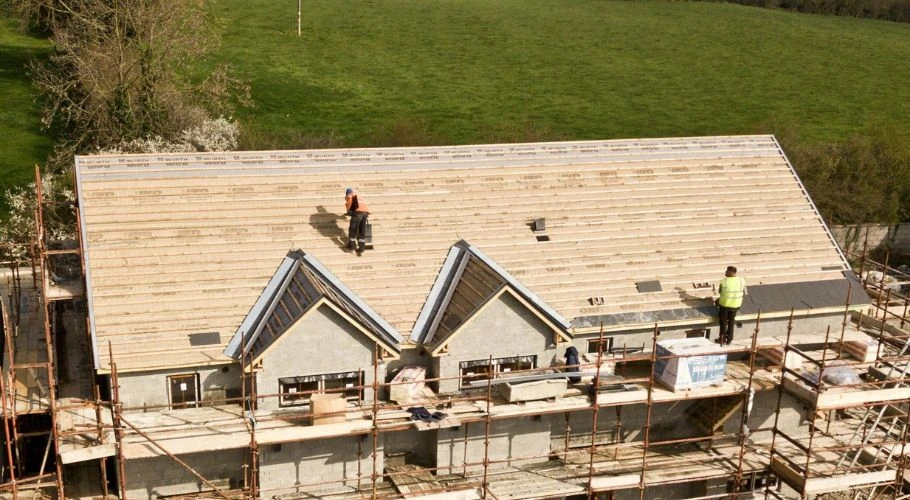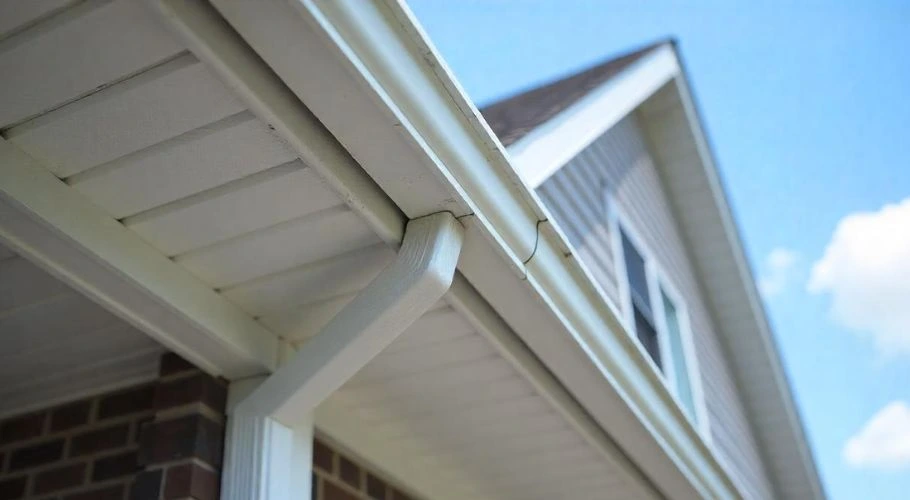
Why Soffit Ventilation Is Important for Roof Health
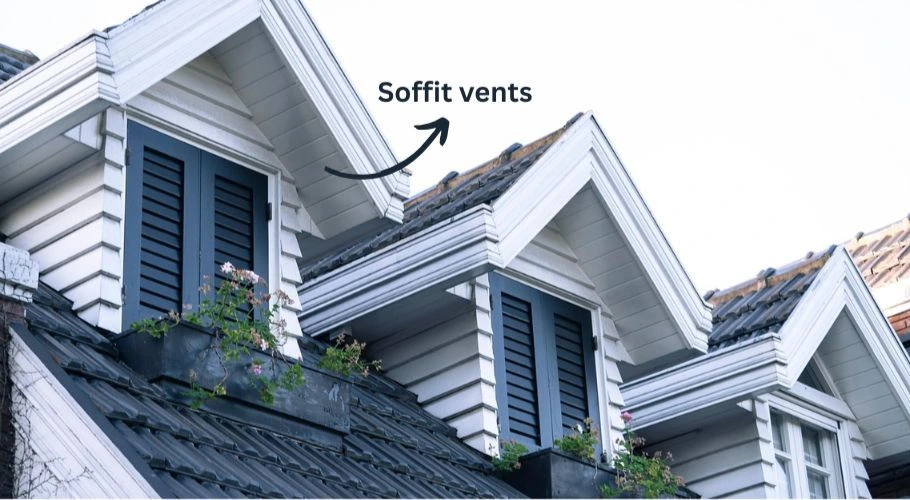
Underneath your roof overhang is what we call the “soffit.” It’s the part you can see if you stand next to your house and look straight up under the edge of your roof. Now, soffit vents are tiny openings built into that area, and their job is to let air flow into your attic.
The airflow these vents create helps your entire attic breathe. And when your attic is breathing, your roof isn’t trapped with hot air, moisture, or all the problems that come with both.
How Does a Soffit Ventilation System Benefit Roofs?
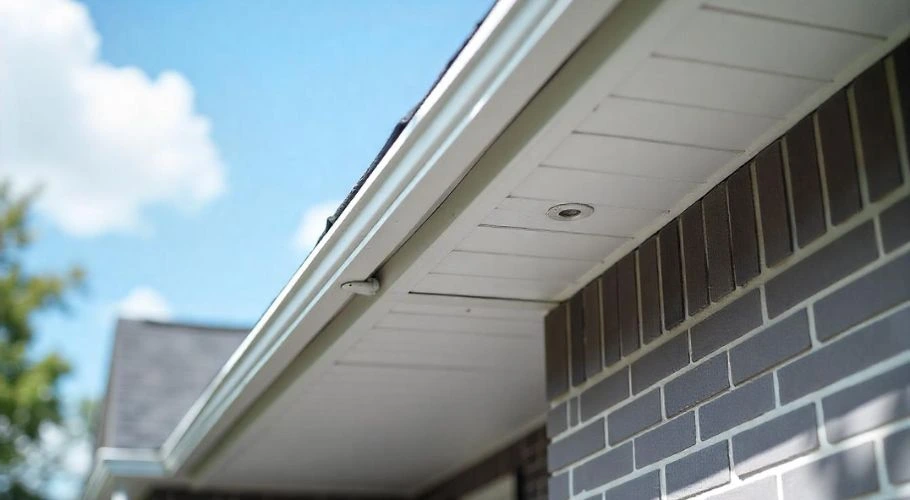
Why are soffit vents important? Installing soffit vents comes with many benefits, and here are some of them:
1. It Prevents Overheated Attics
Ever climbed into your attic in the middle of July? Extremely hot air can be trapped up there. Without proper attic ventilation, heat builds up quickly, especially during summer. That hot air can bake the underside of your roof, blister your roof shingles, warp your roof decking, and even dry out sealants. Basically, everything starts aging before its time.
Soffit vents pull in cool air from outside and help push that heat up and out. With a steady airflow, your attic stays closer to outdoor temperatures, and your roof components last longer. You’ll get more years out of your shingles, fewer cracks, and fewer unexpected repairs.
2. It Prevents Moisture Buildup and Mold
The air in your attic space can get humid. Everyday activities like cooking, doing laundry, and showering push warm air and moisture up into your attic. If there isn’t a proper ventilation system there, you end up with moisture buildup, and that’s where the problem starts.
Moist air in your attic space means mold on your attic insulation, mildew on your rafters, compromised roofing materials, and even rotting wood. You may even see rusty nails or soggy insulation that stops doing its job. Soffit vents bring in dry, fresh air to replace the damp, stale air inside and prevent moisture accumulation. That constant air circulation keeps humidity levels down and helps prevent the kind of long-term damage that’s difficult (and expensive) to undo.
3. It Can Lower Your Electricity Bills
Installing soffit vents can actually help you save on utility costs by reducing energy consumption. An attic with a poor ventilation system makes it harder to maintain a cooler temperature. This is because hot attic air leaks into your living space, and your AC has to fight even harder to keep the place comfortable. That’s bad news if you’re trying to go for energy efficiency.
Soffit vents take some of the load off your HVAC system by helping keep your attic temperatures lower. That means your air conditioner doesn’t have to run as long or as hard. As time passes, better ventilation translates to savings, a longer life for your HVAC unit, and a few more years to your roof’s lifespan.
4. It Helps Prevent Ice Dams in Winter
Warm air from your attic melts the snow on your roof. That melted snow runs down the roof until it hits the colder eaves, where it refreezes. Give it time, and you’ll end up with a solid wall of ice. Water backs up behind it and can seep under your roof shingles and into your house.
Proper soffit ventilation keeps the attic closer to the outside temperature, so the snow on the roof melts evenly (or doesn’t melt at all).
Different Types of Soffit Vents
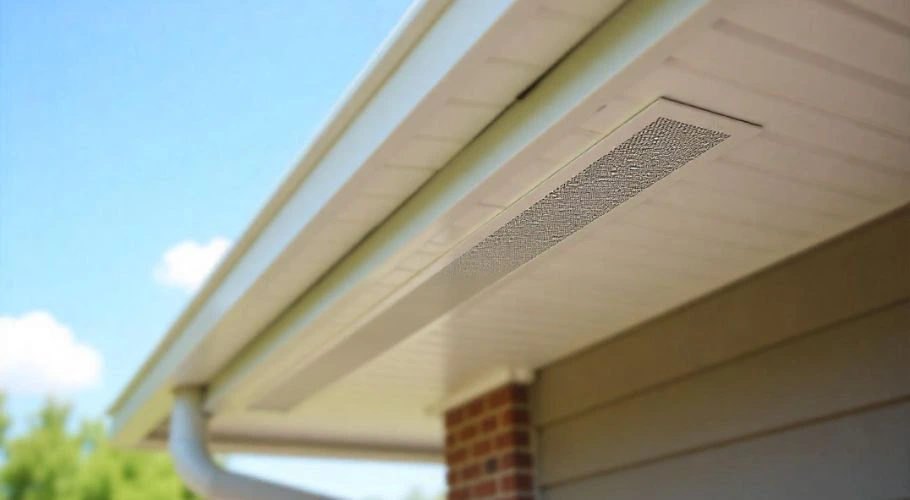
Various types of soffit vents work well with different kinds of roof vents (e.g., gable vents and ridge vents). Depending on your house and roof style, some vents might work better than others. You’ll usually see the following soffit vents:
1. Continuous Soffit Vents
Continuous vents run along the full length of your eaves and give you continuous airflow across the entire attic. Great for bigger homes or homes with long rooflines. Usually, continuous ventilation is paired with ridge vents to create a steady intake-to-exhaust system.
2. Rectangular or Individual Soffit Vents
Rectangular or individual vents are smaller vents installed every few feet. These are a bit easier to retrofit on older homes or homes where a full-length vent might not fit. They still do the job, but you’ll need more of them to cover the same area.
3. Perforated Soffit Panels
These vents are built right into the soffit material itself. If you have vinyl or aluminum soffit vents, they might already have venting built in. Super clean look, and they blend right into the structure.
4. Louvered Vents
Louvered vents have angled slats that allow airflow in while blocking out water and debris. You’ll often find these used in combination with other vent types, especially in areas where wind-driven rain is a concern.
How Many Soffit Vents Does Your Home Need?
The general rule for the number of soffit vents is: for every 150 square feet of attic space, you need 1 square foot of total ventilation. Half of that should be intake (that’s your soffit vents), and the other half should be exhaust (ridge vents, exhaust vents, turbines, etc.).
This way, you can make sure your home has adequate ventilation. However, we recommend checking ot see if your local building codes have any specifications on this topic.
What Happens if Soffits Are Not Vented?
Without properly installed soffit vents, you might run into a few issues. Some of these potential problems are:
Your attic becomes extremely hot in summer, which can warp your shingles and affect your roof sheathing and decking.
Without vented soffits, moisture builds up during winter, leading to mold or wood rot.
Insulation gets damp and stops working.
Your electricity bills go up because your HVAC system is battling attic heat.
The roof ages faster, sometimes shaving years off its expected lifespan.
What Happens if You Block Soffit Vents?
In cases where your house has soffit vents but they’re covered somehow (e.g., by insulation, debris, paint, or even nesting critters), they’re basically useless.
Blockages stop the system from providing improved airflow to the attic. That affects the whole ventilation system and leads to similar or the exact same problems you’d have with no vents at all.
During home inspections, we often find vents completely covered with insulation. It’s a simple fix, though. Usually, the solution involves adding baffles or redirecting insulation. But if the issue isn’t addressed in a timely manner, it can lead to worse problems.
How Can I Maintain My Soffit Vents?
Maintaining proper attic ventilation isn’t too complicated. They don’t need much attention, but soffit vents definitely need to be checked and taken care of to make sure they keep doing their job.
Consider our maintenance tips:
Inspect them regularly. See if they’re clogged with dust, cobwebs, or leaves. If you have perforated soffits, look for discoloration or signs of blockage.
Use a vacuum, leaf blower, or compressed air to clear out whatever needs to be cleaned. You can also use a long-handled brush for debris that won’t come off easily.
In your attic, make sure insulation isn’t jammed up against the soffit. Use baffles to keep the air path open.
Wasps, birds, and squirrels love small spaces. Add wire mesh or vent screens if you see signs of nesting.
Got Questions About Soffit Vents? Let’s Talk.
Notice something off with your attic, roofing system, or electricity bills? It might be time to take a closer look at your home’s ventilation, or more specifically, your soffit vents. Robbins Roofing provides home improvement services in Oklahoma City, helping you prevent costly repairs. We also offer professional installations and roof replacements should the situation call for these types of services.
Reach out today, and let’s make sure your roof’s breathing the way it should!

